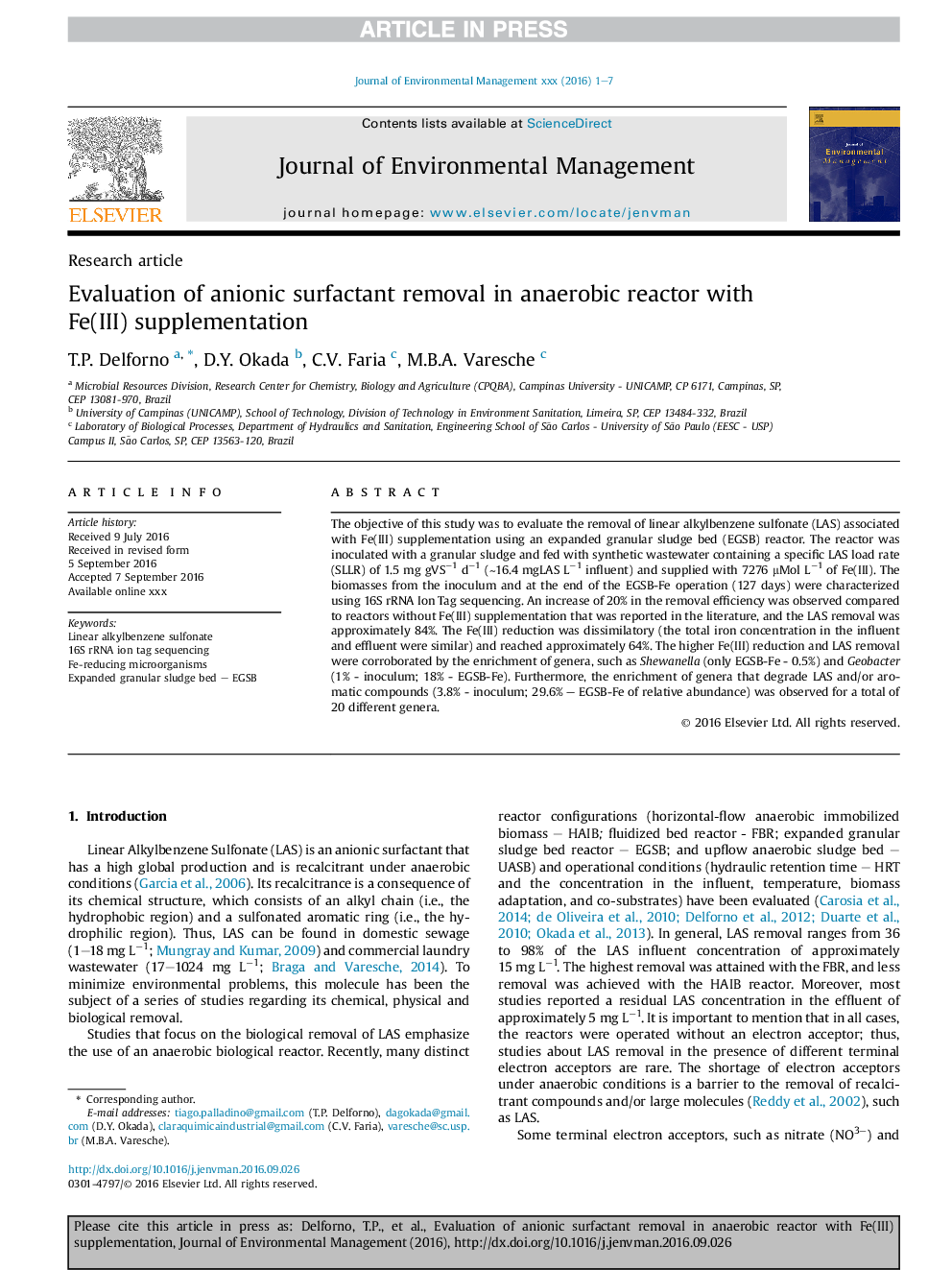| Article ID | Journal | Published Year | Pages | File Type |
|---|---|---|---|---|
| 5117204 | Journal of Environmental Management | 2016 | 7 Pages |
Abstract
The objective of this study was to evaluate the removal of linear alkylbenzene sulfonate (LAS) associated with Fe(III) supplementation using an expanded granular sludge bed (EGSB) reactor. The reactor was inoculated with a granular sludge and fed with synthetic wastewater containing a specific LAS load rate (SLLR) of 1.5 mg gVSâ1 dâ1 (â¼16.4 mgLAS Lâ1 influent) and supplied with 7276 μMol Lâ1 of Fe(III). The biomasses from the inoculum and at the end of the EGSB-Fe operation (127 days) were characterized using 16S rRNA Ion Tag sequencing. An increase of 20% in the removal efficiency was observed compared to reactors without Fe(III) supplementation that was reported in the literature, and the LAS removal was approximately 84%. The Fe(III) reduction was dissimilatory (the total iron concentration in the influent and effluent were similar) and reached approximately 64%. The higher Fe(III) reduction and LAS removal were corroborated by the enrichment of genera, such as Shewanella (only EGSB-Fe - 0.5%) and Geobacter (1% - inoculum; 18% - EGSB-Fe). Furthermore, the enrichment of genera that degrade LAS and/or aromatic compounds (3.8% - inoculum; 29.6% - EGSB-Fe of relative abundance) was observed for a total of 20 different genera.
Keywords
Related Topics
Physical Sciences and Engineering
Energy
Renewable Energy, Sustainability and the Environment
Authors
T.P. Delforno, D.Y. Okada, C.V. Faria, M.B.A. Varesche,
